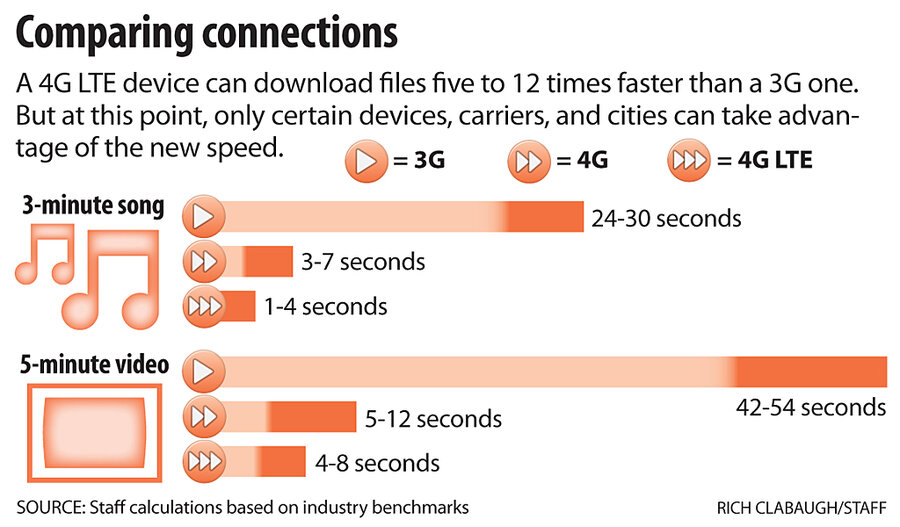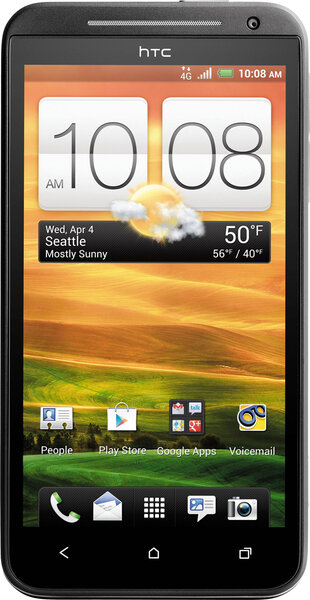4G? LTE? What's the difference?
Loading...
Shopping for a new smart phone can mean deciphering a cryptogram of capital letters. Take Sprint's upcoming powerhouse phone, the HTC EVO 4G LTE.
That's HTC, the company; EVO, the line of phones; and 4G LTE, the speed of its Internet connection.
In 2009, Sprint boasted that it had America's first 4G phones. Yet this month, more than two years later, the phone company celebrated the new EVO as its first 4G LTE phone. What's the difference?
While 4G and 4G LTE both mean generally the same thing – fast! – there's a lot hidden behind those labels.
As smart phones took off a few years ago, shoppers got excited about 3G. The term, short for "third generation," is a loose benchmark for the speed at which mobile devices download data from the Internet. With 3G connections, phones could finally load websites and videos at a decent clip.
But as faster technology emerged, marketers got tricksy. All four of the major American carriers came up with a different definition of 4G. They share only one similarity: being faster than 3G.
AT&T has perhaps the most confusing definition of the bunch. While T-Mobile slapped a 4G sticker on its supercharged 3G network and Verizon erected a brand-new network of 4G towers, AT&T did both.
For example, the most recent Apple iPhone debuted as a 3G phone, but AT&T recently started calling it a 4G phone because it taps into HSPA+, an upgraded version of AT&T's 3G network. In peak conditions, the iPhone is indeed faster on AT&T than on Verizon or Sprint, which did not ratchet up their old networks in the same way. But the new Apple iPad – also a 4G device – is considerably faster than the iPhone on any carrier. It uses a brand-new 4G technology called LTE, or "long term evolution."
While both HSPA+ and LTE are called 4G, the latter promises zippier speeds and improved performance in the future. To distinguish between stopgap technology and the cutting edge, carriers started specifying that some devices are not just 4G, but 4G LTE.
Soon, all 4G will be LTE. Verizon, AT&T, and Sprint have 4G LTE towers in many cities, and promise stronger coverage by the end of the year. T-Mobile says that its LTE service will go online in 2013.
For more on how technology intersects daily life, follow Chris on Twitter @venturenaut.







